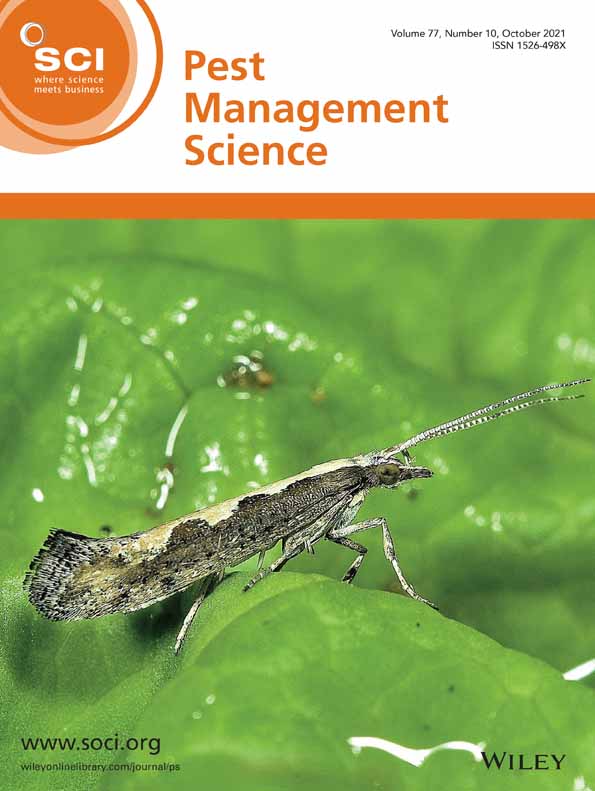Ver ítem
- xmlui.general.dspace_homeCentros e Institutos de InvestigaciónCICVyA. Centro de Investigación en Ciencias Veterinarias y AgronómicasInstituto de BiotecnologíaArtículos científicosxmlui.ArtifactBrowser.ItemViewer.trail
- Inicio
- Centros e Institutos de Investigación
- CICVyA. Centro de Investigación en Ciencias Veterinarias y Agronómicas
- Instituto de Biotecnología
- Artículos científicos
- Ver ítem
Current recommendations and novel strategies for sustainable management of soybean sudden death syndrome
Resumen
The increase in food production requires reduction of the damage caused by plant pathogens, minimizing the environmental impact of management practices. Soil-borne pathogens are among the most relevant pathogens that affect soybean crop yield. Soybean sudden death syndrome (SDS), caused by several distinct species of Fusarium, produces significant yield losses in the leading soybean-producing countries in North and South America. Current management
[ver mas...]
The increase in food production requires reduction of the damage caused by plant pathogens, minimizing the environmental impact of management practices. Soil-borne pathogens are among the most relevant pathogens that affect soybean crop yield. Soybean sudden death syndrome (SDS), caused by several distinct species of Fusarium, produces significant yield losses in the leading soybean-producing countries in North and South America. Current management strategies for SDS are scarce since there are no highly resistant cultivars and only a few fungicide seed treatments are available. Because of this, innovative approaches for SDS management need to be developed. Here, we summarize recently explored strategies based on plant nutrition, biological control, priming of plant defenses, host-induced gene silencing, and the development of new SDS-resistance cultivars using precision breeding techniques. Finally, sustainable management of SDS should also consider cultural control practices with minimal environmental impact.
[Cerrar]

Autor
Rodriguez, Maria Cecilia;
Sautua, Francisco José;
Scandiani, María Mercedes;
Carmona, Marcelo Anibal;
Asurmendi, Sebastian;
Fuente
Pest Management Science 77 (10) : 4238-4248 (Octubre 2021)
Fecha
2021-10
Editorial
Wiley
ISSN
1526-4998
Documentos Relacionados
Formato
pdf
Tipo de documento
artículo
Proyectos
(ver más)
INTA/2019-PD-E6-I116-001/2019-PD-E6-I116-001/AR./Identificación y análisis funcional de genes o redes génicas de interés biotecnológico con fin agropecuario, forestal, agroalimentario y/o agroindustrial.
Palabras Claves
Derechos de acceso
Restringido
 Excepto donde se diga explicitamente, este item se publica bajo la siguiente descripción: Creative Commons Attribution-NonCommercial-ShareAlike 2.5 Unported (CC BY-NC-SA 2.5)
Excepto donde se diga explicitamente, este item se publica bajo la siguiente descripción: Creative Commons Attribution-NonCommercial-ShareAlike 2.5 Unported (CC BY-NC-SA 2.5)

